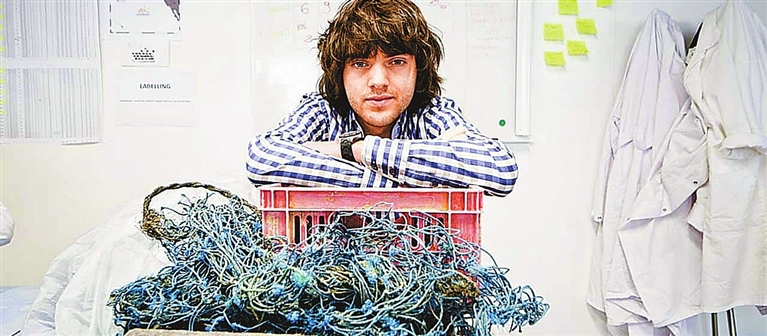
If you’re not following Boyan Slat’s attempt to clean up the Great Pacific Garbage Patch (GPGP), you should be. This young man put his heart and soul into this project and is currently headed for the great patch of garbage floating in the ocean. You can follow the project currently underway on Facebook ((https://www.facebook.com/boyanslat) or see an up-to-date timeline on his site, The Ocean Cleanup, https://www.theoceancleanup.com. Also, you can find his TED talk on YouTube. The Great Pacific Garbage Patch Slat is the poster child of sustainable innovation for his generation, putting his energy towards cleaning up the environmental mess past generations have created. According to some critics he may not have the perfect solution, but, it’s better than doing nothing. The mess has been floating and growing for years. Scientists have estimated the Garbage Patch would take 79,000 years to break down and dissolve in the ocean. With the models created by Slat, his system could clean up 50 percent of the mess by 2025. The majority of the Garbage Patch is large debris. Removing these floating pieces of plastic will prevent them from breaking down into microplastics that wildlife and fish can mistake for food and eventually entering the food we eat. Boyan Slat Slat is 24 years old and the Garbage Patch is almost as old as he is. By the time it was discovered in 1997, it was already massive. At 16, this Nederland-born youth went on a diving trip to Greece. “There were more plastic bags than fish,” he told MNN a few years back. “That was the moment I realized it was a huge issue and that environmental issues are really the biggest problems my generation will face.” Instead of accepting the floating plastic as an adult problem that needs an adult solution, he went back to his high school and went to work solving the problem. Back in his high school classroom he invented a multilevel trawl with centrifugal forces that separated the plastic from the plankton and ocean life. The Ocean Cleanup System 001 “The System 001 is an unmanned system moving with the currents, looking like a u-shaped pipeline floating on top of the current. Beneath the pipeline is a 10 ft (304 cm) skirt which traps the plastic caught in the current, protecting sea life because it is solid and not a net,” Slat states. “Our systems fully rely on natural ocean currents and do not require an external energy source to catch and concentrate the plastic. All electronics used, such as lights, will be solar powered.” Recycling the ocean plastic What will happen to the plastic when it’s back on shore? Slat says he wants to turn it into The Ocean Cleanup brand of merchandise, selling it to support the cleanup of the Great Pacific Garbage Patch. “By producing merchandise that is not a single use item that might end up back in the ocean, it will reduce the chance of it ending up back in the ocean by 99 percent,” he says. (SD-Agencies) | 
